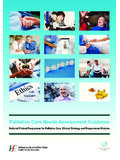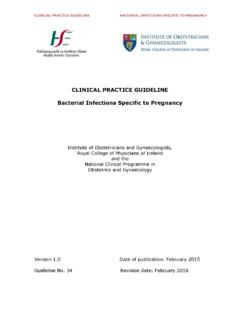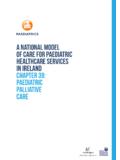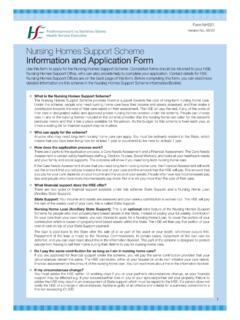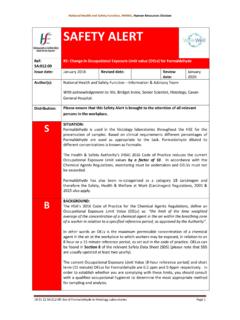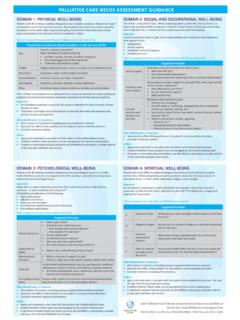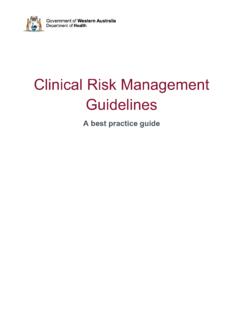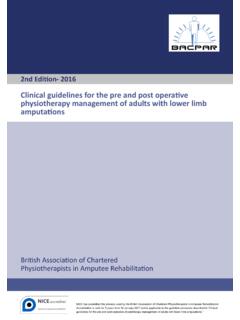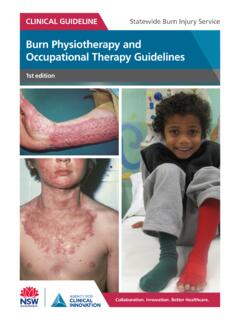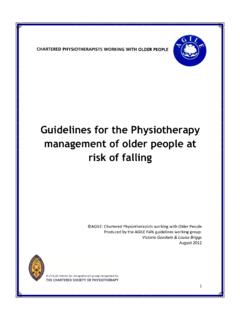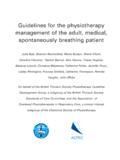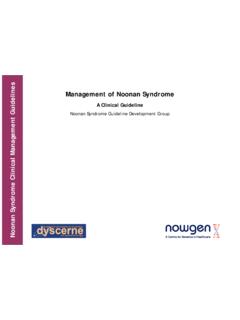Transcription of CLINICAL PRACTICE GUIDELINE THE DIAGNOSIS AND …
1 CLINICAL PRACTICE GUIDELINE Pre-eclampsia and Eclampsia CLINICAL PRACTICE GUIDELINE THE DIAGNOSIS AND management OF SEVERE PRE-ECLAMPSIA AND ECLAMPSIA Institute of Obstetricians and Gynaecologists, Royal College of Physicians of Ireland and the CLINICAL Strategy and Programmes Division, Health Service Executive Version Publication date: September 2011 GUIDELINE No: 3 Revision date: June 2016 CLINICAL PRACTICE GUIDELINE Pre-eclampsia and Eclampsia 2 Contents Revision History .. 3 Abbreviations .. 3 Key Recommendations .. 3 Purpose and Scope .. 4 Background and Introduction .. 4 Methodology .. 5 CLINICAL GUIDELINE .. 6 DIAGNOSIS of Pre-eclampsia .. 6 DIAGNOSIS of superimposed pre-eclampsia .. 7 DIAGNOSIS of severe pre-eclampsia.
2 7 The management of Severe Pre-eclampsia .. 8 General Measures .. 8 Basic Investigations .. 8 Monitoring .. 8 Fluid management .. 9 HELLP syndrome .. 11 Thromboprophylaxis .. 11 The Treatment of Severe Hypertension .. 12 The Treatment and Prevention of Eclampsia .. 14 Delivery .. 17 Stabilisation before Transfer .. 17 Postnatal management .. 18 Immediate post natal care .. 18 Postnatal review .. 19 References .. 20 Implementation Strategy .. 20 Qualifying Statement .. 20 Appendices .. 22 Appendix 1: Neurological monitoring .. 22 CLINICAL PRACTICE GUIDELINE Pre-eclampsia and Eclampsia 3 Revision History Version No. Date Modified By Description 09/11 11/03/16 Louise Kenny Abbreviations ABC Airway, Breathing, Circulation AVPU Alert, Voice, Pain, Unresponsive scale BP Blood Pressure CVP Central Venous Pressure GCS Glasgow Coma Scale HDU High Dependency Unit HELLP Haemolysis Elevated Liver Enzymes and Low Platelets IMEWS Irish Maternity Early Warning Score MAP Mean Arterial Pressure PCR Protein Creatinine Ratio Key Recommendations Women with severe pre-eclampsia should be nursed in a HDU setting with one to one midwifery care and all monitoring should be documented using IMEWS (Irish Maternity Early Warning Score) on HDU charts.
3 Labetalol should be used as the first line antihypertensive, followed by hydralazine where labetalol is contraindicated or ineffective at controlling blood pressure. CLINICAL PRACTICE GUIDELINE Pre-eclampsia and Eclampsia 4 Nifedipine is a potent antihypertensive and should never be given sublingually. The aim of antihypertensive treatment is to keep the systolic blood pressure below 160 mmHg and the MAP < 125 mmHg. Cases of severe pre-eclampsia should be given magnesium sulphate to prevent seizures. Following delivery, the patient should be fluid restricted in order to wait for the natural diuresis. A platelet transfusion is recommended prior to Caesarean section or vaginal delivery when the platelet count is < 20 x 109 ml. Methyldopa should be avoided postnatally. All women with severe pre-eclampsia should return to the hospital for post-natal review within 12 weeks of delivery to debrief, complete any outstanding investigations and plan for the next pregnancy.
4 Purpose and Scope The purpose of this GUIDELINE is to improve the management of severe pre-eclampsia and eclampsia. These guidelines are intended for healthcare professionals, particularly those in training who are working in HSE-funded obstetric and gynaecological services. They are designed to guide CLINICAL judgement but not replace it. In individual cases a healthcare professional may, after careful consideration, decide not to follow a GUIDELINE if it is deemed to be in the best interests of the woman. Background and Introduction Hypertensive disorders of pregnancy remain a leading cause of maternal and neonatal morbidity and mortality. This GUIDELINE summarises the existing evidence and provides a reasonable approach to the DIAGNOSIS , evaluation, and treatment of the severe pre-eclampsia and eclampsia in an Irish context. CLINICAL PRACTICE GUIDELINE Pre-eclampsia and Eclampsia 5 Methodology Medline, EMBASE and Cochrane Database of Systematic Reviews were searched using terms relating to pre-eclampsia , pregnancy induced hypertension , proteinuric gestational hypertension , gestational proteinuria , hypertension and pregnancy and eclampsia.
5 Searches were limited to humans and restricted to the titles of English language articles published between 2000 and 2015. Relevant meta-analyses, systematic reviews, intervention and observational studies were reviewed. guidelines reviewed included: Hypertension in Pregnancy. Report of the American College of Obstetricians and Gynecologists' Task Force on Hypertension in Pregnancy. 2013. ISBN 978-1-934984-28-4. The National Institute of Health and CLINICAL Excellence (NICE) CLINICAL GUIDELINE on Hypertension in Pregnancy: the management of hypertensive disorders of pregnancy. August 2010. Available at: The CLINICAL PRACTICE GUIDELINE of the Canadian Hypertensive Disorders of Pregnancy Working Group. Pregnancy Hypertension ( (14)00004-X/fulltext) The classification, DIAGNOSIS and management of the hypertensive disorders of pregnancy: A revised statement from the ISSHP. Tranquilli AL, Dekker G, Magee L, Roberts J, Sibai BM, Steyn W, Zeeman GG, Brown MA.
6 Pregnancy Hypertens. 2014 Apr;4(2):97-104. doi: Epub 2014 Feb 15. PubMed PMID: 26104417. The principal GUIDELINE developers were Dr Clare O'Loughlin and Professor Louise Kenny. The GUIDELINE was reviewed by: Professor Brian Cleary (Pharmacy, Rotunda), Ms Fiona Dunlevy (Dietician, CWIUH), Dr Maeve Eogan (Obstetrician, Rotunda), Professor John Higgins (Obstetrician, CUMH), Dr Mairead Kennelly (Obstetrician, CWIUH), Ms Oonagh McDermott (HSE Programme), Dr Keelin O Donoghue (Obstetrician, CUMH), Dr Caoimhe Lynch (Obstetrician, CWIUH), Ms Cinny Cusack (Physiotherapy, Rotunda), Dr Maire Milner (Obstetrician, OLOL), Dr Meabh Ni Bhuinneain (Obstetrician, Mayo), Vicky O Dwyer (JOGS), Dr Liz Dunn (Obstetrician, Wexford) and Dr Eddie O Donnell (Obstetrician, Waterford), Professor Michael Turner ( CLINICAL Lead, O&G Programme & CWIUH). CLINICAL PRACTICE GUIDELINE Pre-eclampsia and Eclampsia 6 CLINICAL GUIDELINE DIAGNOSIS of Pre-eclampsia Pre-eclampsia is a multi-system disorder unique to human pregnancy characterised by hypertension and involvement of one or more other organ systems and/or the fetus.
7 Raised blood pressure is commonly, but not always, the first manifestation. Proteinuria is the most commonly recognised additional feature after hypertension but should no longer be considered mandatory to make the CLINICAL DIAGNOSIS . In line with the majority of international guidelines , a DIAGNOSIS of pre-eclampsia can be made when hypertension arises after 20 weeks gestation and is accompanied by one or more of the following signs of organ involvement: Proteinuria: spot urine protein/creatinine ratio (PCR) >30 mg/ mmol ( ) or >300mg/day or at least 1g/L ( 2 + ) on dipstick testing. OR in the absence of proteinuria Other maternal organ dysfunction: o Renal insufficiency: serum or plasma creatinine >90 mol/L o Haematological involvement: Thrombocytopenia (<100,000 / L), haemolysis or disseminated intravascular coagulation (DIC) o Liver involvement: Raised serum transaminases, severe epigastric and/or right upper quadrant pain o Neurological involvement: eclampsia, hypereflexia with sustained clonus, persistent new headache, persistent visual disturbances (photopsia, scotomata, cortical blindness, posterior reversible encephalopathy syndrome, retinal vasospasm), Stroke o Pulmonary oedema Uteroplacental dysfunction (fetal growth restriction) Rarely, pre-eclampsia presents before 20 weeks gestation; usually in the presence of a predisposing factor such as hydatidiform mole, multiple pregnancy, fetal triploidy, severe renal disease or antiphospholipid antibody syndrome.
8 CLINICAL PRACTICE GUIDELINE Pre-eclampsia and Eclampsia 7 DIAGNOSIS of superimposed pre-eclampsia Superimposed pre-eclampsia is diagnosed when a woman with chronic hypertension or pre-existing proteinuria develops one or more of the systemic features of pre-eclampsia after 20 weeks gestation. Worsening or accelerated hypertension should increase surveillance for pre-eclampsia but it is not diagnostic. In women with pre-existing proteinuria, the DIAGNOSIS of superimposed pre-eclampsia is often difficult as pre-existing proteinuria normally increases during pregnancy. In such women, substantial increases in proteinuria and hypertension should raise suspicion of pre-eclampsia and therefore justifies closer surveillance. However, a DIAGNOSIS of superimposed pre-eclampsia requires the development of other maternal systemic features of pre-eclampsia. DIAGNOSIS of severe pre-eclampsia The criteria for managing a woman with these guidelines are subjective to a certain degree.
9 However, the following are indicators of severe pre-eclampsia and justify close assessment and monitoring. They may not necessarily lead to delivery but assuming a DIAGNOSIS of pre-eclampsia, it is likely that maternal parameters will not improve until after delivery. 1. Eclampsia 2. Severe hypertension a systolic blood pressure over 160mmHg with at least + proteinuria 3. Moderate hypertension a systolic blood pressure over 140 mmHg and/or diastolic blood pressure over 90 mmHg with significant proteinuria and any of: severe headache with visual disturbance epigastric pain signs of clonus liver tenderness platelet count falling to below 100 x 109/l alanine amino transferase rising to above 50iu/l creatinine >100mmol/l average of 3 readings over 15 minutes at least ++ proteinuria OR PCR 30mg/mmol or in 24 hours CLINICAL PRACTICE GUIDELINE Pre-eclampsia and Eclampsia 8 The management of Severe Pre-eclampsia General Measures The woman should be managed in a quiet, well lit room in a high dependency care type situation.
10 Ideally there should be one to one midwifery care. After initial assessment, IMEWS HDU charts (see appendix 2) should be commenced to record all physiological monitoring and investigation results. All treatments should be recorded. The consultant obstetrician on duty should be informed, so that they can be involved at an early stage in management . This should be documented in the notes. A large bore intravenous cannula for infusing drugs or fluid should be inserted, but not necessarily used until either an indication presents or a decision is made to deliver. If intravenous fluid is given, it should ideally be administered by controlled volumetric pump. Basic Investigations Blood should be sent for: Urea, creatinine, urate and serum electrolytes Liver function tests Full Blood count Clotting screen Group and save serum Blood tests should be repeated every 12 hours whilst on the protocol. In the event of haemorrhage more frequent blood tests should be taken.


